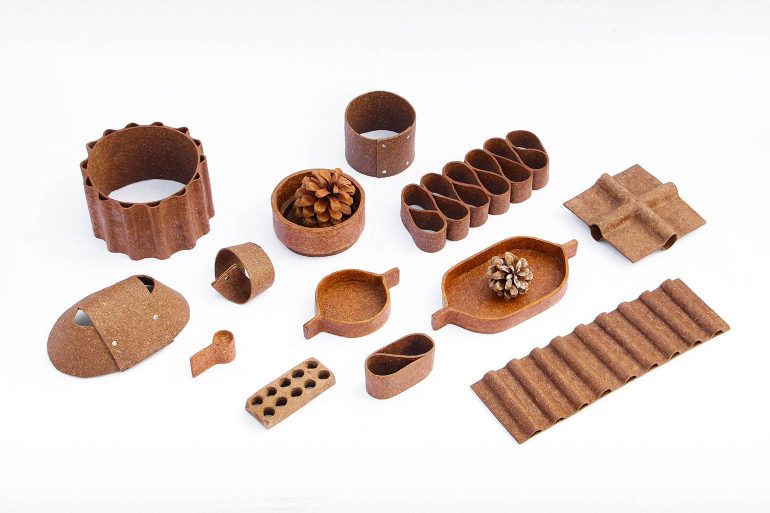To the people living at the foothills of the Himalayas, the forests flanked by misty mountains are as familiar as the backs of their hands. A few winters of the year, this sight is broken by tragic flames that engulf the florae. Forest fires in Himachal Pradesh are partly due to the shedding of highly combustible needles by Chir Pine trees, a native species that otherwise benefits the livelihoods of the locals. The excess of dry pine needles shed on the forest floor combined with the quick action of the wind causes incalculable environmental distress.

Meet Gaurav MK Wali, a graduate design student whose work focuses on the perceptions and uses of materials. Having studied in Himachal Pradesh, the pine forests were a part of his daily life, and so were the forest fires. Wali drew inspiration from the biomaterial movement to search for a solution to the infernos.
It is incredibly slow work to make things out of the pine needles, the craft has a steep learning curve and the product quality doesn’t justify the labour put into it.
Through his research, Wali discovered that pine needles were quite difficult to work with, a fact that the traditional pine needle artisans agreed with. It is incredibly slow work to make things out of the pine needles, the craft has a steep learning curve and the product quality doesn’t justify the labour put into it. The design student came up with two projects utilising the same material but resulting in distinct interpretations. “A problem does not exist in a singularity. The forest fires in Himachal Pradesh are systemic. I found out that the problem of forest fires was merely the tip of the iceberg. The imbalance caused by these needles had much deeper roots—water scarcity, unemployment, and degradation of biodiversity,” explains Wali.

With The Cheer Project, Wali decided to process the pine needles into a recyclable and biodegradable material that the artisans could use to strengthen the rural economy. The circular model, established with the help of the central government, also aided in restoring the pride of the locals in their work and their sense of community.


Cheer Project became a medium for the community of Rait Village, especially the women, to address a mutual problem by joining hands and spreading awareness globally. “It was during this time I felt that the project wasn’t mine anymore, it became the project of the community,” says Wali. The natural characteristics of the needles were lost by transforming them into an entirely different material. Seeking to explore the value of pine needles in their natural form, the project Outside/Inside was approached through a more artistic lens.

Outside/Inside is a collection of objects made from pine needles. Breaking away from the clinical nature of modern product design, its form encourages the user to discover unique ways of using the material in its original state, bringing attention to the visual, haptic and functional experience. Technically, using a material in its original form allows for lesser energy requirements and a smaller carbon footprint. Aesthetically, its natural features such as smell and texture can be preserved and appreciated. “I believe every material has a character and a story to tell. You just need to be conscientious enough to listen. Every material has the potential to be discovered and to be rediscovered — the latter being the challenging part”, the designer said.
***
Ankitha Gattupalli is an architect and active contributor to discourse on spatial practices. Her work aims to uncover and reshape the processes through which spaces, ecologies and communities are collectively created. This article is second in the Alchemist series on material researchers and biomaterials. Gattupalli previously wrote about material designer Sachi Tungare, who created a new material out of marigolds, on material researcher Tejas Sidnal, who upcycled carbon black into construction tiles, and on Kerala-based Malai studio that created vegan leather from coconut. Read here , here and here.

